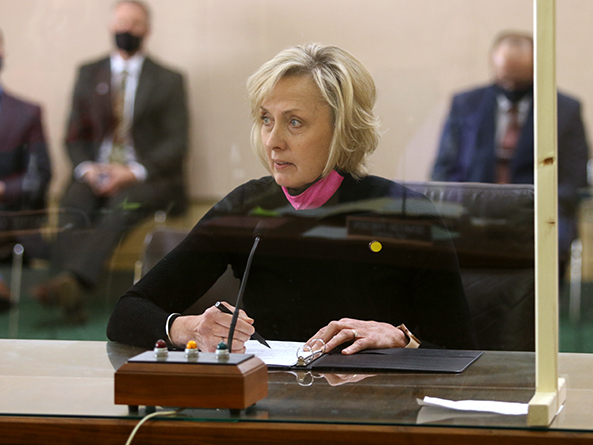Limit on train length proposed
The Transportation and Telecommunications Committee heard testimony March 1 on a proposal that would restrict the length of certain trains in Nebraska.

LB539, as introduced by Fremont Sen. Lynne Walz, would limit freight or work trains to no longer than 7,500 feet in length. Walz said that isolated communities with limited entrances blocked by bodies of water or railroads have experienced emergency services delays because of crossings blocked by excessively long trains.
“Excessive [train] lengths obstruct the path of children getting to school, parents getting to work and, most importantly, emergency vehicles assisting a person or property in danger,” she said.
Walz brought an amendment to the hearing that instead would limit trains to no longer than 8,500 feet to mirror limits established in other states.
Speaking in support of the bill was James Dulin, a train engineer from Hershey. He said that it is impossible to stop a 15,000-foot train — which is a common length in Nebraska — without blocking at least one train crossing.
“There’s almost no risk to the railroads for [having] unlimited lengths of trains,” Dulin said. “Nobody likes regulations, but this is an area where regulations are for the good of the people.”
Sonny Fankhauser of Waverly also testified in support of LB539. There is a train crossing approximately every mile in Nebraska, he said, which could increase response time exponentially for first responders in the event of an emergency.
“With 15,000 feet [long] trains, you’re blocking three crossings at once,” Fankhauser said. “You increase the probability of blocking someone in without getting a [first] responder to them.”
Opposing the bill was Jeff Davis, speaking on behalf of BNSF Railway. He said that shorter trains would not necessarily mean that trains would not block crossings.
“Most blocked crossings are [the result of] an infrastructure problem and require an infrastructure solution,” Davis said. “Sometimes we can make an operational change to solve [the issue], but more often than not, we need a longer siding, a greater separation or something else to improve the situation and that’s a discussion that’s best had between the railroad and local officials.”
Daniel Blank, representing Union Pacific Railroad, also spoke in opposition to LB539. He said the Federal Railroad Administration found in 2018 that there is insufficient data and no justification for limiting train lengths.
“The ability to operate trains with more rail cars allows us to run fewer trains, which reduces the potential for employee injuries and derailments, improves best practices and contributes to key safety aspects,” Blank said.
The committee took no immediate action on the bill.


